Treasures of Hue, Hoi An & Da Nang
Discovering The Treasures of Hue, Hoi An & Da Nang
Central Vietnam and the cities of Hue, Hoi An and Da Nang have been on our radar since we traveled to Hanoi, in the north, and Ho Chi Minh City in the south. We love history, culture, temples, mountains, and food. We were excited to explore the treasures of Hue, Hoi An, and Da Nang. Since we spend the winters in Singapore, we plan on making multiple trips to Vietnam. Central Vietnam travel was our focus this year. We visited the Imperial Palace, the Ancient Town of Hoi An, My Son Sanctuary, Marble Mountains, Ba Na Hills, and more.
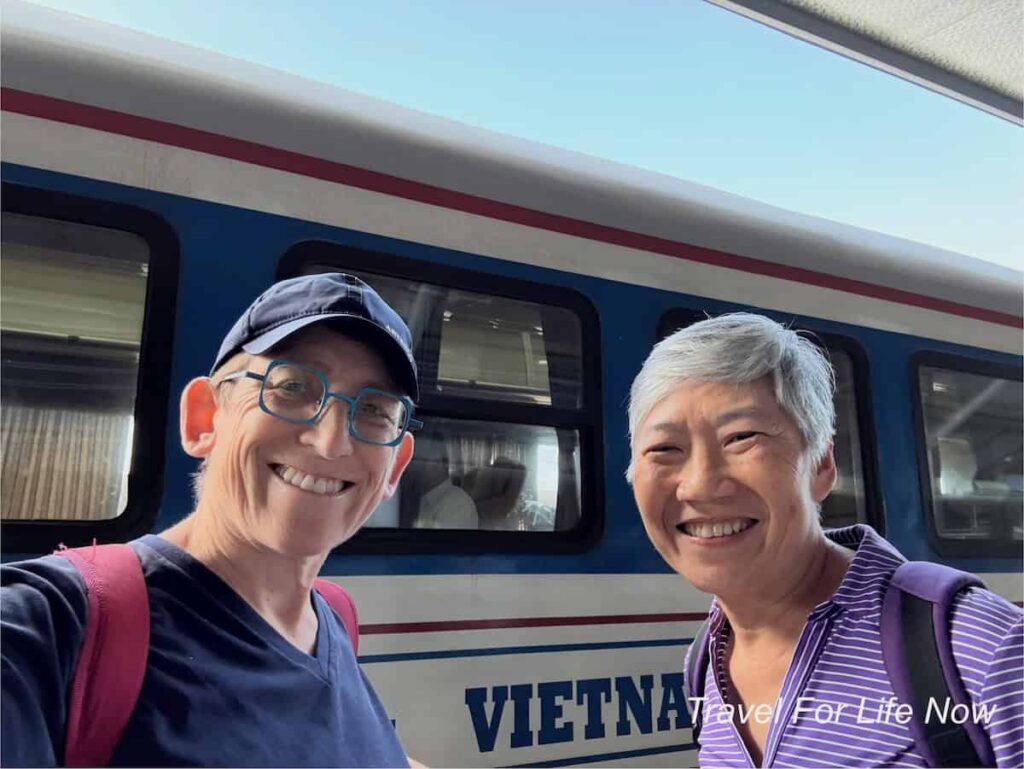
Treasures of Hue: Following the South China Sea By Train
After flying into Danang, we went directly to the train station to take a train to Hue. The 4-hour train journey from Danang to Hue meanders along the South China Sea and is one of the most picturesque train rides in Asia.
On our train, the right side (facing forward) had the best views of the sea. We were disappointed to be sitting on the left side until we discovered the views of the jungle, including streams and waterfalls. We were able to see the beaches and the sea by looking across the aisle.
There are places to buy snacks and food on the platform prior to boarding the train. In addition, people with carts came through the train selling fruit, drinks, and more. The windows on the train were dirty and not good for photography.
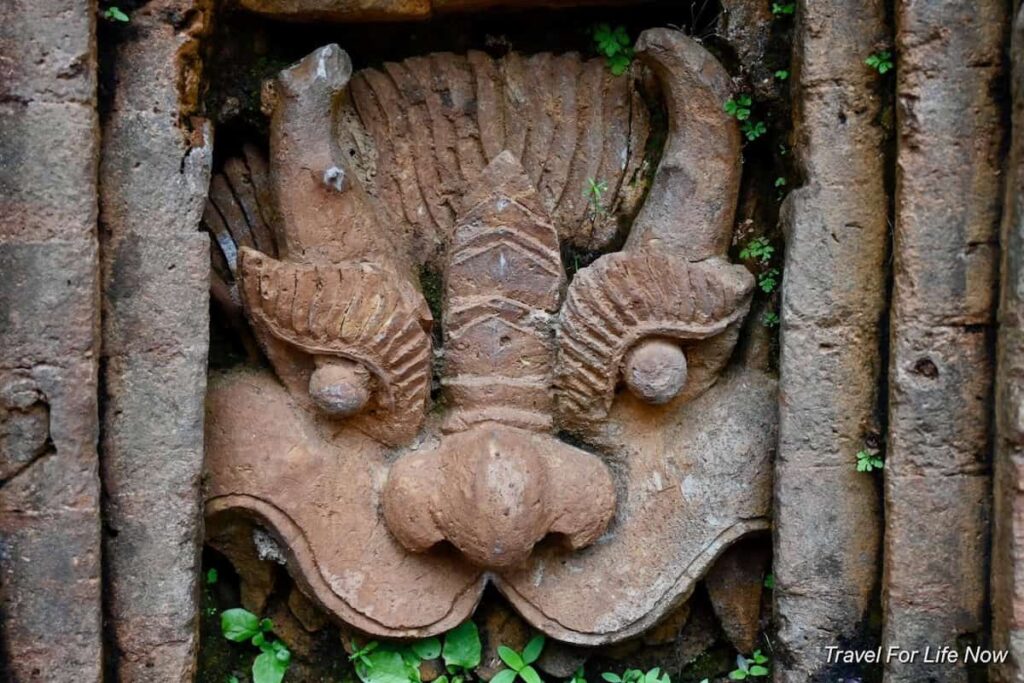
A Glimpse into Hue’s Rich History: From Champa to the Nguyen Dynasty
In 1306, the area now called Hue was given as a wedding dowry to the Vietnamese by Champa King Che Man when he married Princess Huyen Tran of the Tran Dynasty. Prior to that, it was part of the Champa kingdom. The Champa were influenced by India and Hinduism and battled the Vietnamese off and on from the second century CE until the 1700s.
Hue became the imperial city when Nguyen Anh (Emperor Gia Long) unified Vietnam in 1802. The last monarchy to rule Vietnam, the Nguyen dynasty, lived in the Imperial City until the French colonized the country. The Imperial Citadel and the Forbidden City, UNESCO World Heritage sites, are full of opulent palaces, shrines, and temples along the banks of the Perfume River.
The elaborate royal tombs were the highlights of our first day. Emperor Minh Mang’s Tomb, one of the treasures of Hue, has peaceful gardens, courtyards, and temples. The gardens were used for different purposes–meditation, sports, and more. Emperor Khai Dinh’s Tomb was over-the-top with imported European marble, granite, and ceramics covering decorative phoenixes and dragons.
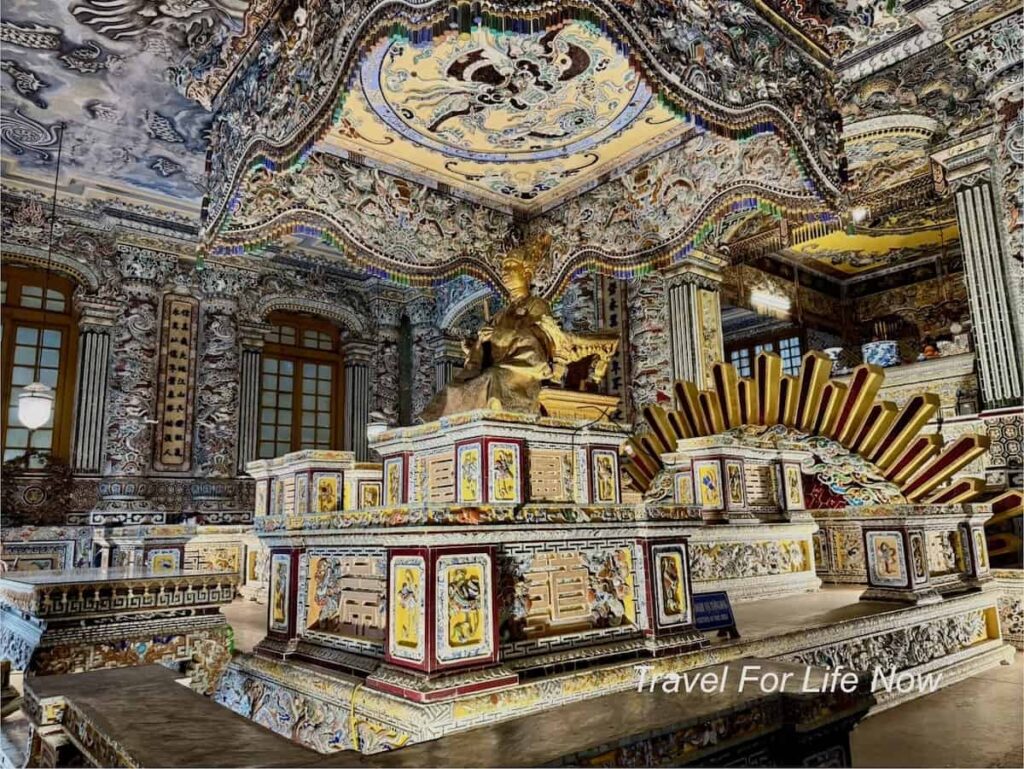
We took a cruise on a dragon boat up the Perfume River to the site of Thien Mu Pagoda, also known as the Temple of the Celestial Lady. Pagodas and temples are used interchangeably in Vietnam. Built in 1601, the Pagoda is a 7-story structure and a symbol of the city.
The DMZ and the Vinh Moc Tunnels: a look into the lives of those who lived through the Vietnam War
When we were in Hanoi, we visited S21 (Tuol Sleng Genocide Museum), Hoa Lo Prison, and other sites from the Vietnam War (called the War Against Imperial America by the Vietnamese). On this trip, we wanted to dig deeper into the War by visiting the Demilitarized Zone (DMZ) and the site of some of the battles. We were interested in hearing more about the war from the Vietnamese perspective. We visited Khe San Base, the Vinh Moc Tunnels, and the former DMZ.
The Demilitarized Zone (DMZ)
The DMZ (the 17th parallel) was the dividing line between North and South Vietnam from 1954 to unification in 1976 and the site of many battles during the war. We walked to the middle of the bridge to a line that marked the point where people from each side could not pass. This line divided families for decades. It was sobering to stand on line and reflect on the impact of the war.
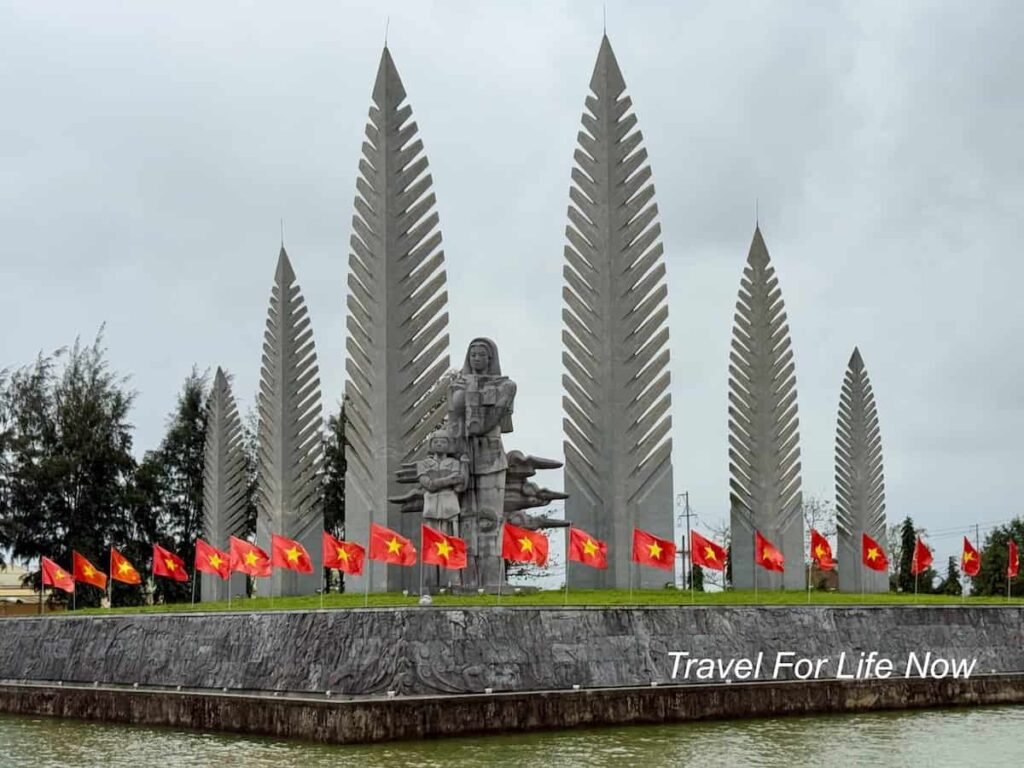
There is a North Vietnamese monument a short walk away. There are two statues–one of a woman and a child on the South side looking to the North towards a soldier/husband on the north side. The monuments symbolize how the people of Vietnam were separated.
Vinh Moc Tunnels—A Village Lived Underground
Local villagers built the Vihn Moc tunnels to escape US bombing. About 250 people lived, and 17 babies were born, underground during an 18-month period. The villagers only went out at night to harvest and fish. The first level of tunnels was 10 meters deep. When the US dropped bombs that went 10 meters deep, the villagers dug deeper. The 2nd level is 20 meters deep, and the 3rd level is 30 meters deep. There were rooms for living, meeting, school, theater, and more. Some of the tunnels exit to the beach of the South China Sea. People lived in those conditions for a long time. Children played and went to school underground.
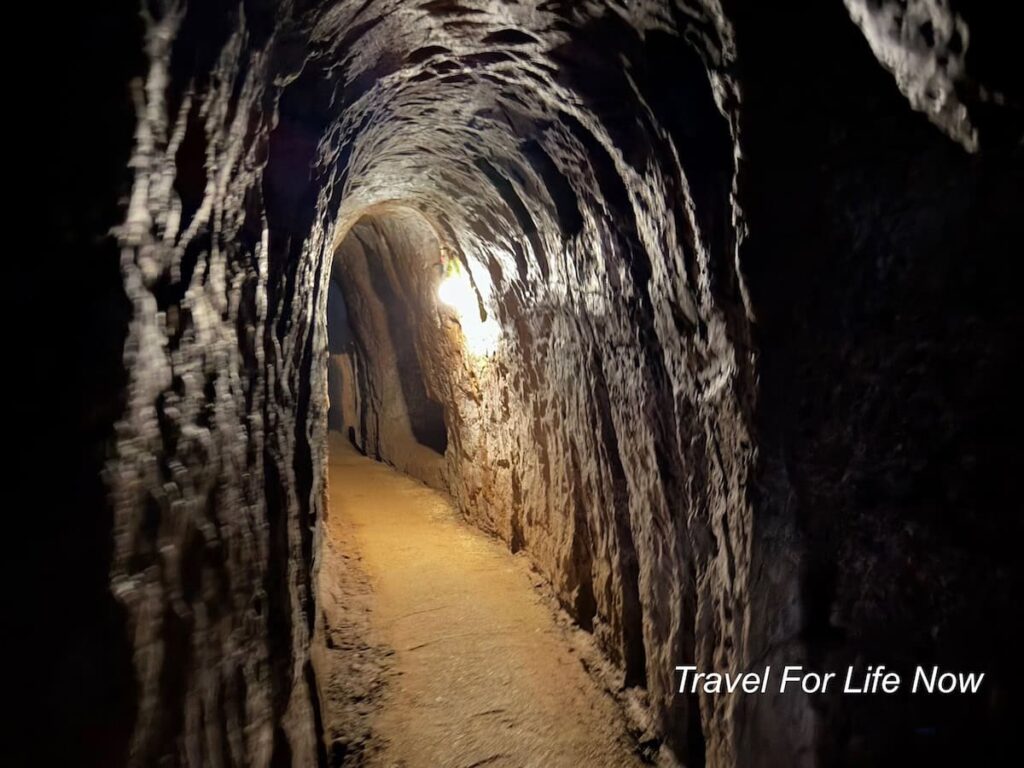
The US suspected that the tunnels were used to supply the North Vietnamese because they were very close to the DMZ and the Ho Chi Minh trail. According to the Vietnamese, this was not the case.
Khe Sanh Base
Khe Sanh is located near the Laotian border. The US military used the Khe Sanh base to spy on and disrupt the supply routes for the North Vietnamese via the nearby Ho Chi Minh Trail. In 1968, the Battle of Khe Sanh took place over 77 days. Some say that it was a tactic to divert US resources to Khe Sanh as the Tet Offensive was being planned and then begun by the North Vietnamese.
We walked around the site to see the destroyed and captured American planes from the battles that are on view. There are many sculptures at Khe Sanh that pay tribute to the horror of the Vietnam War and the people lost during it.
From the Treasures of Hue to Hoi An
After enjoying the treasures of Hue, it was time to visit Hoi An for more Vietnamese history. The drive from Hue to Hoi An retraced our train ride from another perspective, with the opportunity to stop en route.

The Thanh Toan Tile-Roofed Bridge was our first stop, just a few kilometers outside of Hue in Hoang Thuy Village. The narrow wooden structure was constructed in 1776 to enable farmers and villagers to cross the canal. The beautiful bridge has glazed roofed tiles and 7 small compartments, arranged so visitors can sit and admire the peaceful surroundings. It is similar to the Japanese Covered Bridge in Hoi An, but much more lovely and peaceful without the huge numbers of Instagrammers and tourists. We love seeing wet markets when we travel, so we took the time to wander through the local market.
Next on our itinerary were Lang Co beach and Lap An Lagoon. Lang Co is one of the most beautiful beaches in Vietnam. The Hai Van and Bach Ma mountain ranges surround the lagoon. The presence of traditional wooden stilt houses and fishing boats makes it a picturesque place to take a break from the drive.
Driving Through the Hai Van Pass
The winding and steep road that leads up to the Hai Van Pass (Ocean Cloud Pass) connects the cities of Da Nang and Hue. The pass was once the border between the Champa Kingdom and the Dai Viet (who later became the Vietnamese). Later, it was the border between China and Vietnam. In the 13th century, the Mongols were repelled at the pass. Still later, the French built bunkers on and around the pass. They called it “the Street Without Joy” due to the dangers of ambushes. Now, it is a main thoroughfare from north to south. The panoramic views from the top of the pass are breathtaking.
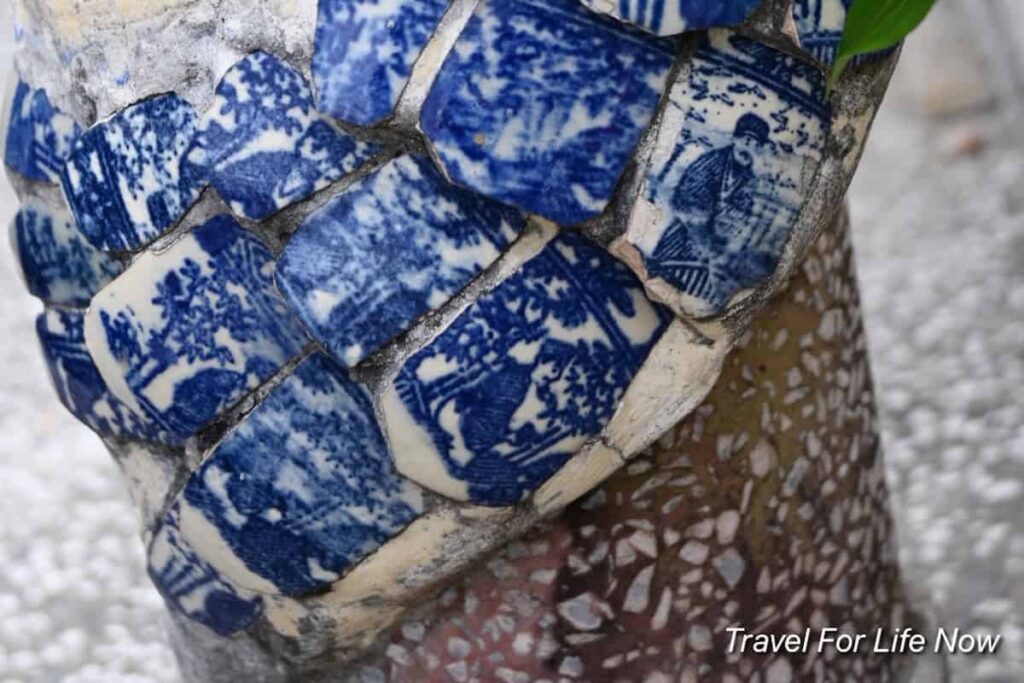
We planned on stopping at An Bang cemetery to see the City of Ghosts, but our driver missed the stop. He took us to Dien Ngọc cemetery near Hoi An instead. Vietnamese ancestral worship mandated cemeteries to be located near rice paddies and family homes. Dien Ngọc was typical of a local cemetery featuring above-ground tombs. Families used cracked ceramics featuring scenes from ancient times, dating back to the Imperial Days, to decorate the tombs. The tombs were fascinating.
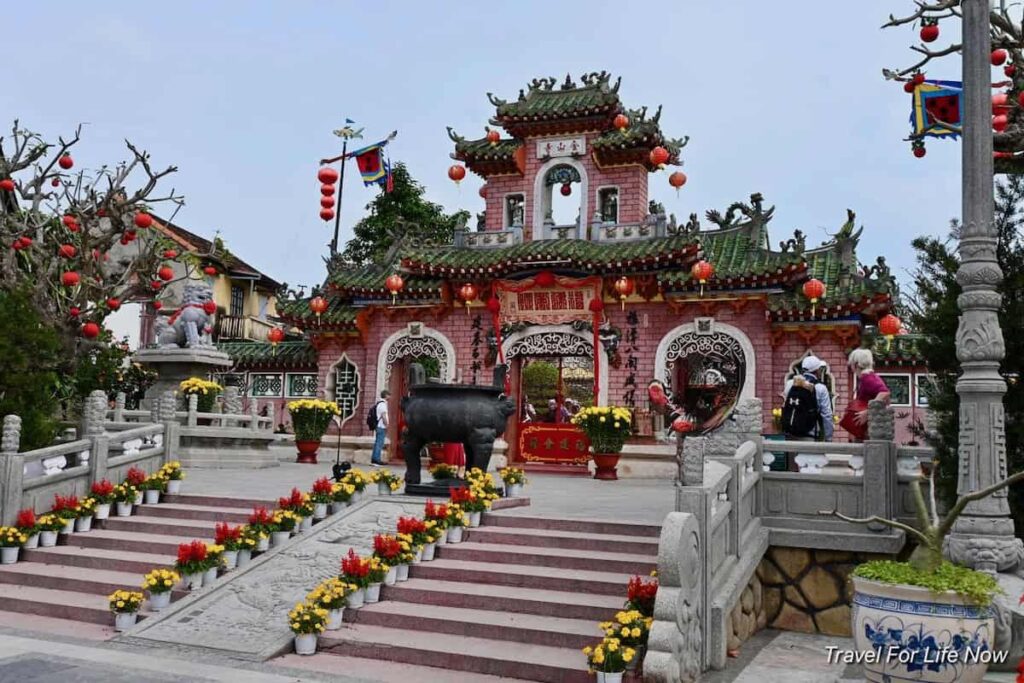
Stepping into Hoi An’s Ancient Town: A UNESCO World Heritage Site
Hoi An, our next stop, is renowned for its remarkably well-preserved Ancient Town. We were excited to see another facet of Vietnamese history.
The Ancient Town is the heart of Hoi An, and is full of narrow, winding streets, historic buildings, and temples. The town still reflects a blend of Vietnamese, Chinese, Japanese, and French influences, all evident in its architecture, temples, and assembly halls. We bought a ticket to visit five of the well-preserved assembly halls, temples, and museums. Some of the Assembly Halls and Temples are still in use by descendants.
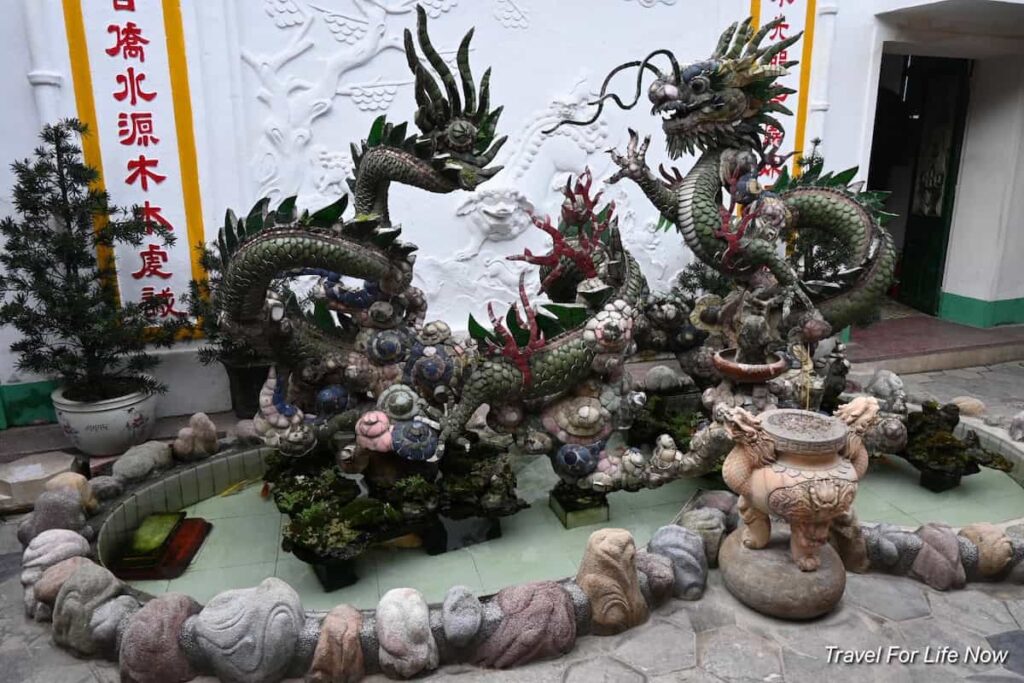
Many traditional heritage houses have been converted into souvenir shops, restaurants, and cafes. There are many places to eat and shop in the old town and along the water.
An Evening Stroll Along the Thu Bon River
An evening walk along the Thu Bon River can be a magical spectacle. Colorful boats cruise up and down the river, and there is no shortage of food carts selling crepes, meat on a stick, Vietnamese fried pancakes, smoked ice cream, and cold drinks. One side is noisy with many bars and restaurants.
The highly touted Lantern Festival was disappointing. It is very touristy, and few people light lanterns and float them in the river. Environmentally, it is not a good idea. We had more fun making our own more permanent lanterns.

We enjoyed the Bamboo Circus. The performers use long bamboo poles as props. Some performers hold them while others climb up and dance on top of them. The feats of acrobatics, gracefulness, and agility were impressive. It was a Vietnamese Cirque du Soleil.
Since we were in Hoi An just after the end of Tet (the Lunar New Year), we saw ceremonies that honored ancestors at the temples.
Hoi An is famous for its skilled tailors, and many people buy custom-made clothing while in the city. We did not visit any tailors but had friends who were very happy with their purchases.
Another thing that we did not do was to ride bicycles to nearby beaches like An Bang and the surrounding countryside to see rice paddies, vegetable farms, and villages. We saved this for the next time we are back in the City.
My Son Sanctuary: A Glimpse into the Champa Kingdom
One of the highlights of our trip was visiting My Son. My Son Sanctuary was the political and religious center for the Champa Kingdom from the 4th century to the 13th century. The temple complexes were influenced by Hinduism and dedicated to Lord Shiva. The US bombed the temples during the Vietnam War because it suspected that the Viet Cong were using My Son as a hiding place. The Vietnamese whom we spoke to believe that the bombing was retaliatory because many mothers of the Viet Cong lived in the area.
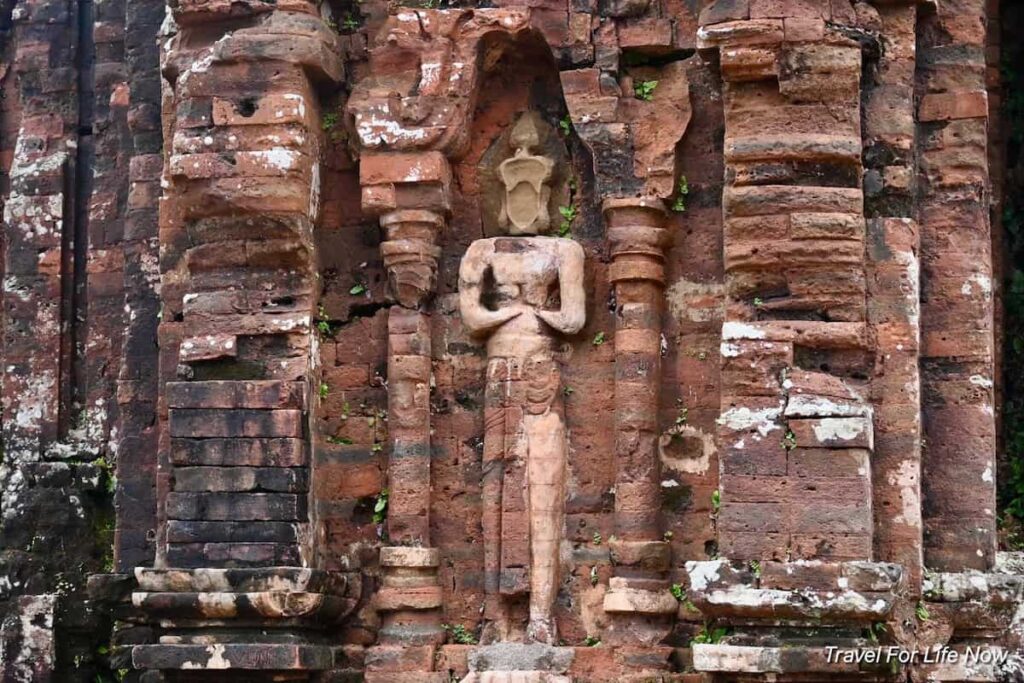

Tourists descend on My Son in large numbers in the morning and leave within a couple of hours. After that, we had the site to ourselves. The ruins are beautiful, peaceful, and architecturally fascinating. Some of the buildings are 4 stories. The bricks have very little space between them with unknown thin mortar between the stones. The Vietnamese are trying to restore the site but have been unable to determine the composition of the vegetable-based cement used between the bricks.
Each of the Champa kings added to the site, resulting in about 70 structures over 1,000 years. The temples are in ruins, but we were able to view some of the beautiful bas-reliefs depicting scenes from Hindu stories.
My Son is peaceful (when not filled with noisy tourists). We elected not to do the sunrise tour because there was too much rain and clouds in the forecast.
Ba Na Hills and the Golden Bridge: A Scenic Detour
While en route to Da Nang, we took a detour to Ba Na Hills to check out the famous Golden Bridge. Unfortunately for us, the weather wasn’t cooperative. Fog and mist shrouded everything. We could barely see the outline of the famous hands holding up the bridge. The rest of the place is like a fairy tale with a fake French Medieval Village, an arcade, a wax museum, rides, and many places to eat.
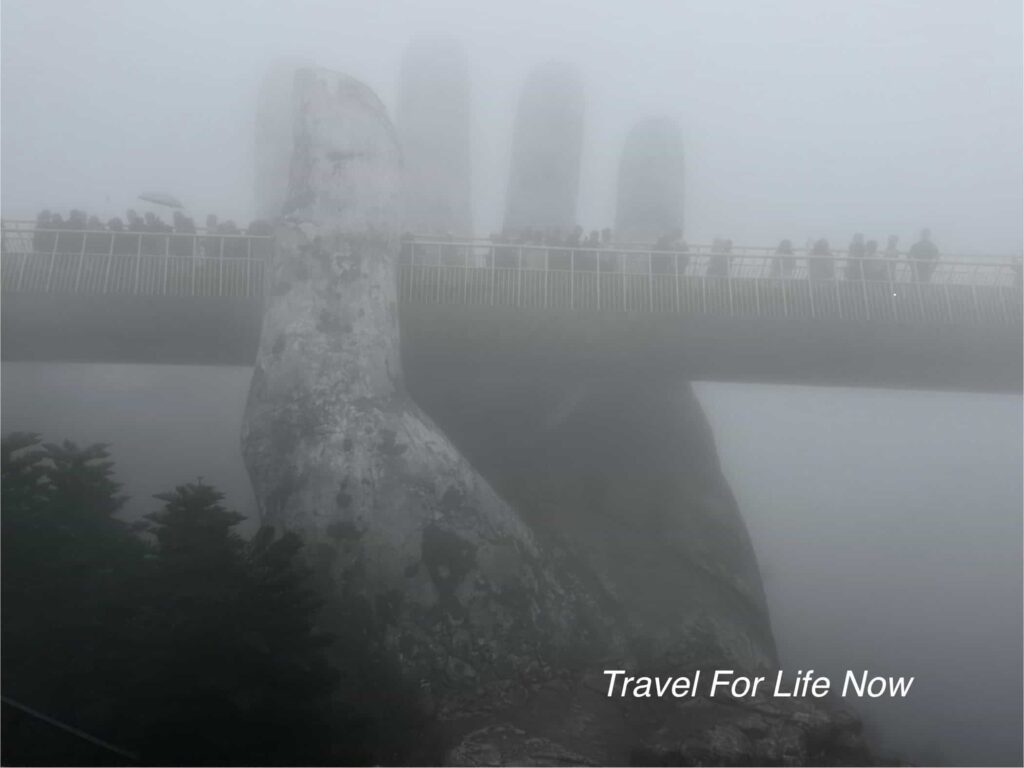
The Marble Mountains: Exploring Caves, Temples, and Panoramic Views
Located in Da Nang, the Marble Mountains are a cluster of limestone and marble hills named for the 5 elements: water, earth, fire, wood, and metal. The mountains have Buddhist temples, sanctuaries, caves, and tunnels, which are important spiritual places. We enjoyed the lovely Linh Ung pagoda with the Guan Im figure. The views were spectacular from the plaza.
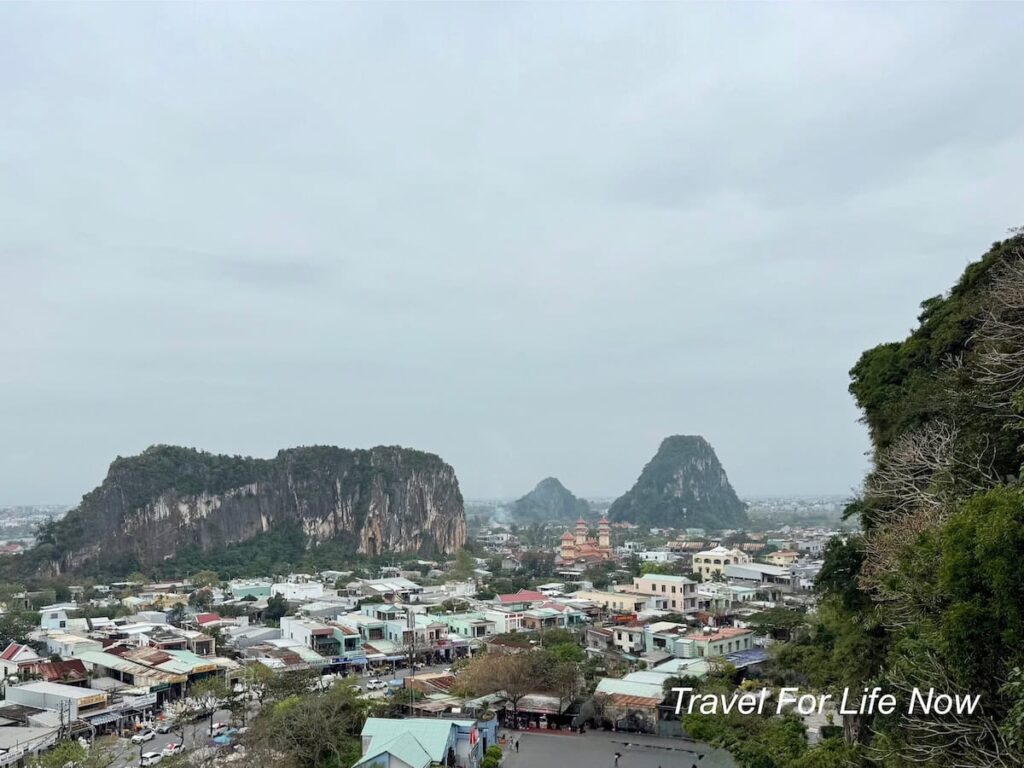
We highly recommend spending an afternoon at the Cham Museum of Sculpture in Da Nang. The museum showcases some of the artifacts that were recovered from My Son Sanctuary and tells the history of the Champa people. We also stopped by the Night Market and the Dragon Bridge. We enjoyed visiting, sampling, and purchasing chocolate from the many chocolate stores.
One of our happiest discoveries during our trip was the food specialties of Hue, Hoi An, and Central Vietnam. We did free food tours in Hue and Hoi An. We’ll be posting about that in a separate post.

For more on Vietnam, see our posts on:
Please leave your thoughts and comments about the Treasures of Hue, Hoi An, & Da Nang.
Please take a moment to share this post with someone or on social media.
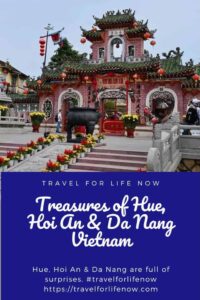




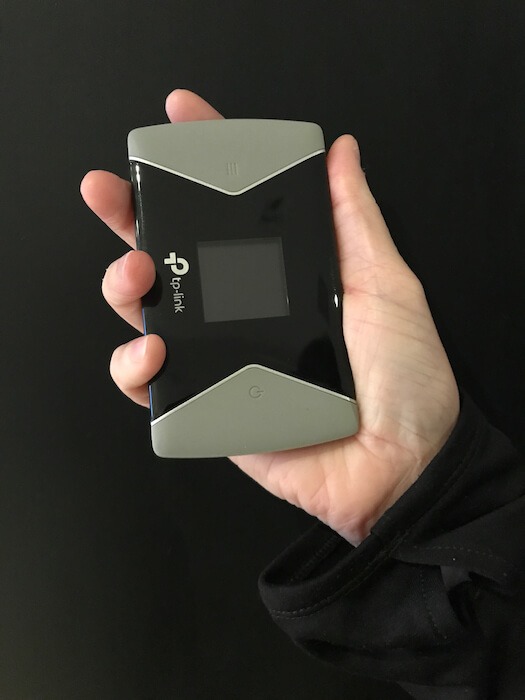
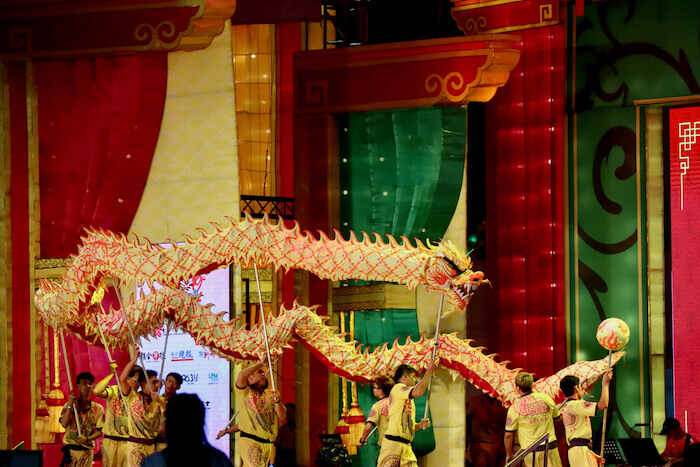
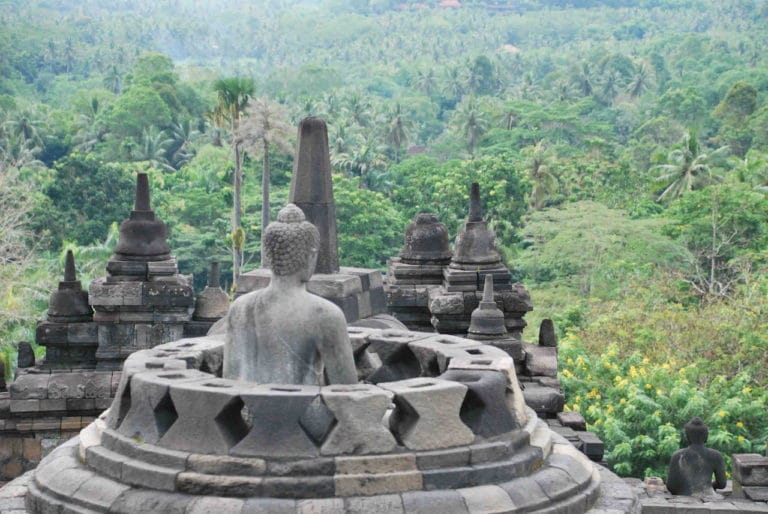
I think the trip from Hue to Da Nang and Hoi An is one of the best experiences you can have in Vietnam. From historic sites and stunning beaches to the breathtaking Hai Van Pass and unique places like Ba Na Hills — there’s just so much to see and enjoy. It all really captivates me.